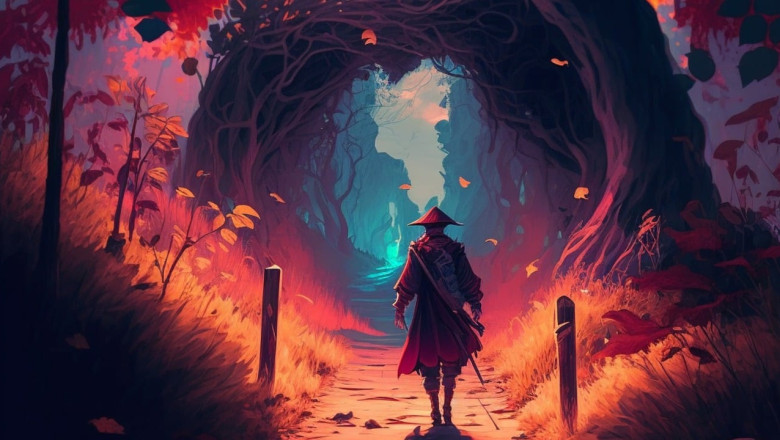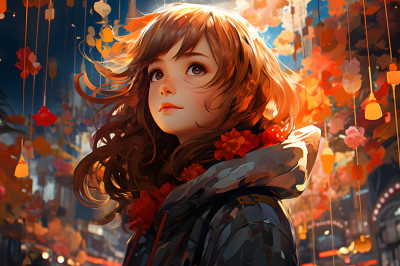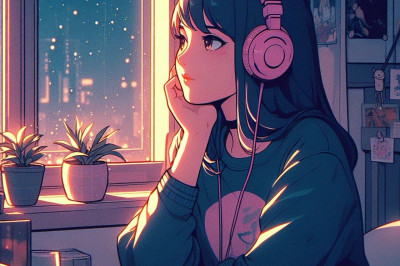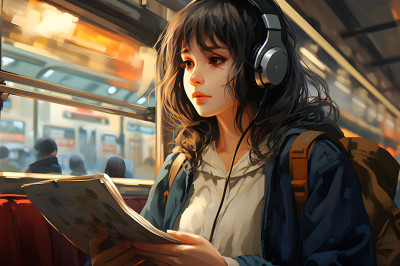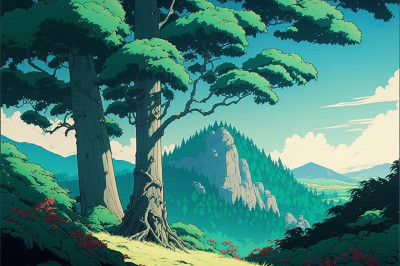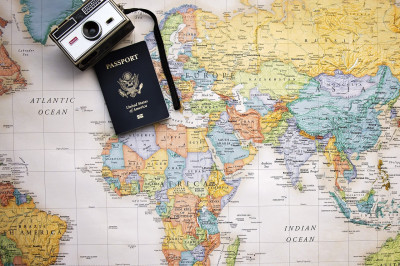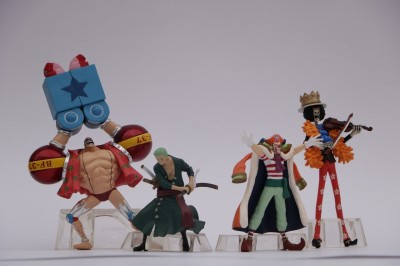The Emergence of the Anime Wave
The Anime Wave refers to the surge in popularity and influence of Japanese animation, commonly known as anime, outside of Japan, particularly in Western cultures. This phenomenon began in the late 20th century and has continued to grow, with anime becoming a significant cultural force that has impacted entertainment, art, and media around the world.
Historical Context and Origins
Anime's roots can be traced back to the early 20th century, with the earliest known Japanese animation dating back to However, it wasn't until the post-World War II era that anime began to develop its distinctive style and storytelling approach. Pioneers like Osamu Tezuka, often referred to as the "God of Manga," played a crucial role in shaping the medium. Tezuka's work laid the groundwork for what would become the modern anime industry.
The Spread of Anime in the West
The spread of anime in Western countries initially began with the importation and localization of Japanese animated series in the 1960s and 1970s. Shows like "Astro Boy," "Speed Racer," and "Kimba the White Lion" were among the first to reach Western audiences, albeit often heavily edited to suit local tastes and broadcasting standards. The real turning point came in the 1980s and 1990s, with series like "Dragon Ball," "Sailor Moon," and "Pokémon" becoming household names and igniting the anime boom.
Cultural Exchange and Adaptation
As anime gained popularity in the West, it led to a cultural exchange where Western animators and storytellers began to draw inspiration from the storytelling techniques, visual styles, and thematic complexity found in Japanese animation. This exchange was not one-sided; Japanese creators also took cues from Western media, leading to a dynamic interplay that enriched both traditions.
The Impact on Western Animation
The influence of anime can be seen in various aspects of Western animation, from the visual styles and character designs to narrative structures and themes. Western cartoons started to adopt more serialized storytelling, complex character development, and a willingness to explore darker or more mature subject matter, all hallmarks of anime. This shift represented a departure from the episodic, often comedic nature of traditional Western cartoons.
The Role of Technology and Globalization
Advancements in technology and the rise of the internet have played a significant role in the Anime Wave. The ease of access to anime through streaming services, fansubs, and official translations has allowed for a rapid expansion of its audience. Globalization has further facilitated the cross-pollination of ideas and styles between Japanese anime and Western cartoons, making the Anime Wave a truly international phenomenon.
The Origins of Anime and Its Early InfluenceEarly Japanese Animation
The history of anime can be traced back to the early 20th century. The earliest known Japanese animation dates from 1917, with works such as "Namakura Gatana" (The Dull Sword) and "Katsudō Shashin" (Moving Picture). These silent short films were heavily influenced by Western animation and the influx of foreign films during that period. The creators of these early animations were pioneers like Ōten Shimokawa, Jun'ichi Kōuchi, and Seitaro Kitayama, who are often referred to as the "fathers of anime."
Pre-war Developments
During the 1920s and 1930s, Japanese animation continued to develop, with the creation of the first talkie anime in 1933, "Chikara to Onna no Yo no Naka" (Within the World of Power and Women), by animator Kenzō Masaoka. This period also saw the emergence of the first anime feature film, "Momotaro: Umi no Shinpei" (Momotaro, Sacred Sailors) in 1945, which was commissioned by the Japanese Imperial Navy. These early works laid the groundwork for the distinctive style and storytelling techniques that would become hallmarks of anime.
Post-war Era and the God of Manga
After World War II, Japan faced a period of reconstruction and cultural re-evaluation. During this time, Osamu Tezuka, often referred to as the "God of Manga," began creating comics that would have a profound impact on the future of anime. His seminal work, "Astro Boy" (Tetsuwan Atomu), first published in 1952, was adapted into an animated TV series in This series is considered the first popular anime television series and set the stage for the modern anime industry.
Technological Advancements and Stylistic Evolution
In the 1960s and 1970s, technological advancements in animation production, such as the use of color and improved animation techniques, allowed for more dynamic and visually appealing anime. The unique visual style of anime, with its large expressive eyes and dynamic motion, began to take shape during this period. This style was partly influenced by the limitations of the animation process, which encouraged the use of less detailed characters and more focus on facial expressions and storytelling.
Early International Exposure
Anime began to gain international exposure through exports and adaptations. Series like "Speed Racer" (Mach GoGoGo) and "Gigantor" (Tetsujin 28-gō) were among the first to reach Western audiences, albeit with significant alterations to make them more palatable to non-Japanese viewers. These early exports laid the foundation for anime's growing popularity outside Japan and demonstrated its potential to resonate with a global audience.
Cultural Exchange and Influence on Western Animation
The cultural exchange between Japan and the West during the post-war era facilitated the spread of anime. Western animators and storytellers began to take notice of the unique storytelling and artistic styles present in anime. This led to the incorporation of anime-inspired elements into Western cartoons, such as exaggerated facial expressions and serialized storytelling, which were previously uncommon in Western animation. The influence of anime can be seen in various Western animated series from the late 20th century onwards, marking the beginning of anime's reshaping of Western animation.
Key Features of Anime That Distinguish It from Western AnimationVisual Style
Anime is known for its distinct visual style, which includes characters with large, expressive eyes and exaggerated facial expressions. This style is often attributed to the influence of early manga artists like Osamu Tezuka. The character designs can range from the very realistic to the highly stylized, and they often feature colorful, vibrant palettes. Backgrounds are typically detailed and atmospheric, contributing to the overall aesthetic and storytelling.
Storytelling and Themes
Anime often encompasses a wide range of genres and explores complex themes that can be philosophical, psychological, or social in nature. Unlike many Western cartoons, which traditionally targeted younger audiences, anime is made for a variety of age groups, including adults. This allows for more mature content, including violence, romance, and political intrigue. The storytelling in anime is also known for its depth and character development, with serialized narratives that can evolve over many episodes or even seasons.
Cultural Nuances
Anime is deeply rooted in Japanese culture, and as such, it incorporates various cultural nuances that distinguish it from Western animation. This includes the use of honorifics, traditional Japanese settings, festivals, and customs. These cultural elements can provide a unique perspective and depth to the storytelling, which may be unfamiliar to Western audiences but add to the richness of the anime experience.
Production Techniques
Anime production often involves a combination of hand-drawn and computer-generated techniques. The traditional cel animation method, although less common now, has given way to digital animation processes. However, anime still retains its unique approach to cinematography and visual direction, with techniques such as dramatic zooms, speed lines, and still frames that are less prevalent in Western animation.
Pacing and Episode Structure
The pacing in anime can be quite different from Western cartoons, with some series known for their slow and deliberate storytelling that builds over time. Episodes may focus heavily on character development and atmosphere, sometimes at the expense of fast-paced action. This pacing reflects the serialized nature of many anime, where the story is designed to unfold over a longer period.
Genre Diversity
Anime covers an extensive range of genres, far beyond what is traditionally seen in Western animation. From horror and sci-fi to romance and slice-of-life, anime genres are diverse and often blend elements from multiple categories. This diversity allows for a broad spectrum of storytelling that can appeal to many different audiences.
Emotional Depth
Characters in anime are often portrayed with a significant emotional depth. Internal monologues, poignant backstories, and emotional conflicts are common, providing a level of psychological complexity that is less common in Western cartoons. This emotional resonance is a hallmark of the medium and is often cited as a reason for its strong connection with viewers.
Use of Music and Sound
The use of music in anime is typically more prominent and integral to the experience than in Western animation. Opening and ending theme songs can be significant, often performed by popular J-pop artists, and are used to set the tone of the series. The score within an anime is also carefully crafted to enhance the emotional impact of scenes and character interactions.
Influence on Pop Culture
Anime has had a significant influence on global pop culture, inspiring various forms of media and entertainment outside of Japan. This includes Western animation, where elements of anime's visual style and storytelling have been incorporated into various shows. The global fanbase for anime continues to grow, with conventions, merchandise, and online communities dedicated to the appreciation of the medium.
The Pioneering Anime Series That Broke Through Western MarketsAstro Boy (Tetsuwan Atomu)
One of the earliest anime to make an impact on Western audiences was "Astro Boy," which debuted in Japan in 1963 and in the United States in Created by Osamu Tezuka, the "God of Manga," Astro Boy was a science fiction series about a powerful robot boy who fought crime and injustice. Its themes of humanity, ethics, and futuristic technology resonated with audiences globally, setting a precedent for the storytelling depth that anime could offer.
Speed Racer (Mach GoGoGo)
Following Astro Boy's success, "Speed Racer" raced onto Western television screens in the late 1960s. With its fast-paced action and unique animation style, "Speed Racer" captivated children with the thrilling adventures of a young car racer named Speed and his quest to win races in his advanced car, the Mach The show's emphasis on speed and competition tapped into the burgeoning car culture of the time.
Star Blazers (Space Battleship Yamato)
"Star Blazers," known in Japan as "Space Battleship Yamato," reached Western audiences in the late 1970s. It was a space opera that featured a rebuilt WWII battleship turned spaceship, the Yamato, on a mission to save Earth. The series was notable for its serialized storytelling, character development, and moral complexity, which were not common in Western animation at the time.
Robotech (The Macross Saga)
In the mid-1980s, "Robotech" took the Western market by storm. It was an adaptation of three different anime series from Japan, with "The Macross Saga" being the most prominent. "Robotech" introduced many Western viewers to the mecha genre, with its transforming fighter jets and epic space battles. The series also dealt with adult themes such as war, love, and loss, further distinguishing anime from Western cartoons.
Dragon Ball & Dragon Ball Z
"Dragon Ball" and its sequel "Dragon Ball Z" exploded in popularity during the late 1980s and 1990s. The series followed the adventures of Goku and his friends as they protected Earth from a variety of powerful foes. "Dragon Ball Z" in particular became a cultural phenomenon, known for its intense fight scenes, power-ups, and long-running story arcs. It played a significant role in popularizing anime among a new generation of fans.
Sailor Moon
"Sailor Moon" arrived in the early 1990s and became a defining series for the magical girl genre. It featured a group of teenage girls who transformed into the Sailor Scouts, protectors of the universe. The show's blend of action, romance, and empowerment themes struck a chord with audiences, particularly young girls who had rarely seen such characters in Western animation.
Pokémon
In the late 1990s, "Pokémon" became a global sensation, not just as an anime but as a multimedia franchise including video games, trading card games, and merchandise. The anime followed a young trainer named Ash Ketchum on his journey to become a Pokémon Master. Its widespread appeal to children and the interactive nature of the franchise helped cement anime as a staple in Western children's entertainment.
Yu-Gi-Oh!
"Yu-Gi-Oh!" capitalized on the collectible card game craze of the early 2000s. The anime, which centered around a card game that had ancient magical origins, appealed to the same demographic that loved "Pokémon." Its success further demonstrated the potential for anime to not only entertain but also drive lucrative merchandising opportunities.
These pioneering series laid the groundwork for anime's acceptance and popularity in Western markets. They introduced new themes, storytelling techniques, and genres to Western audiences, reshaping perceptions of what animation could be and paving the way for future anime series to find success internationally.
The Cultural Exchange: Western Cartoons Inspired by AnimeThe Aesthetic Influence
The visual style of anime has had a profound impact on Western animation, with many creators adopting the expressive character designs, dynamic action sequences, and vibrant color palettes characteristic of Japanese animation. Shows like "Teen Titans" and "Avatar: The Last Airbender" showcase anime's influence through their use of exaggerated facial expressions and eyes that convey a wide range of emotions, a hallmark of anime's visual language. The fluidity of movement and kinetic energy in fight scenes also reflect the anime style, as seen in "Samurai Jack" and "The Boondocks."
Storytelling and Themes
Anime's storytelling techniques and thematic depth have inspired Western cartoons to explore more complex narratives and character development. Unlike traditional Western cartoons, which often reset the status quo at the end of each episode, many anime series feature serialized storytelling with arcs that span multiple episodes or even entire seasons. This approach has been embraced by Western shows such as "Steven Universe" and "Adventure Time," which feature ongoing plots, character growth, and themes of identity, friendship, and morality.
Genre Blending and Experimentation
Anime is known for its ability to blend genres and experiment with unconventional concepts, which has encouraged Western animators to push the boundaries of their own work. Western cartoons have begun to explore a wider range of genres, from horror and science fiction to romance and slice of life, often mixing elements in innovative ways. "The Powerpuff Girls" combines superhero action with comedy and a touch of girl power, while "Castlevania" delves into dark fantasy and horror, genres that are well-trodden in anime but less common in Western animation.
Character Archetypes and Tropes
Western cartoons have also borrowed character archetypes and tropes from anime, integrating them into their own storytelling. The "mysterious transfer student," the "stoic warrior," and the "energetic young protagonist" are just a few examples of character types that have crossed over from anime into Western shows. These archetypes are often used to subvert expectations or to pay homage to the anime genre, as seen in "Teenage Mutant Ninja Turtles" and "Kim Possible."
Cultural References and Homages
In a nod to the influence of anime, Western cartoons frequently include cultural references and homages to popular Japanese series. This can range from subtle visual nods and Easter eggs to explicit parodies and pastiches. "The Simpsons" and "South Park" have both featured episodes that directly parody well-known anime, while "Star vs. the Forces of Evil" and "Gravity Falls" incorporate anime-inspired visual gags and plot elements.
Animation Techniques and Technology
The adoption of anime's animation techniques and technology has been another area of cultural exchange. Western studios have incorporated techniques such as "limited animation" for stylistic effect and cost-saving measures, a practice commonly used in anime production. Additionally, the use of digital animation tools and software that originated in Japan has become widespread in Western animation, allowing for smoother animation and more detailed backgrounds, as exemplified by the work on "My Little Pony: Friendship Is Magic" and "Voltron: Legendary Defender."
Voice Acting and Localization
The practice of voice acting in Western cartoons has also been influenced by anime, particularly in the approach to dubbing and localization. Western voice actors have adopted the emotive and often exaggerated delivery style that is a signature of anime voice acting. This can be seen in the English dubs of anime as well as in originally English-language cartoons that take inspiration from the vocal performances in anime, such as "RWBY" and "Miraculous: Tales of Ladybug & Cat Noir.
The Business of Anime: Collaborations and Co-ProductionsHistorical Context of Anime Collaborations
The history of anime collaborations and co-productions with Western companies dates back several decades. One of the earliest examples is the partnership between Japanese and American studios in the creation of the animated series "Thundercats" in the 1980s. This early collaboration set the stage for future partnerships, as it combined Western storytelling with Japanese animation techniques, appealing to audiences in both regions.
Strategic Partnerships and Licensing Deals
In recent years, strategic partnerships between Japanese anime studios and Western media companies have become more common. These partnerships often involve licensing deals, where a Western company acquires the rights to distribute an anime series outside of Japan. For instance, Netflix has entered into numerous licensing agreements with Japanese studios to stream anime globally, which has significantly increased the accessibility and popularity of anime.
Co-Productions and Shared Projects
Co-productions are a step beyond licensing, involving shared creative input, funding, and profits. An example of a successful co-production is the anime "Castlevania," produced by the American company Powerhouse Animation Studios in collaboration with Netflix. The series blends Western narrative style with anime-influenced animation, showcasing the potential of such partnerships.
Impact on Animation Techniques and Storytelling
Collaborations and co-productions have led to a cross-pollination of animation techniques and storytelling methods. Western cartoons have started to adopt anime-style expressions and action sequences, while anime has begun to incorporate Western humor and narrative structures. This blending of styles enriches both mediums, offering fresh perspectives and innovative content to audiences.
Economic Benefits and Market Expansion
The economic benefits of collaborations and co-productions are significant. They allow anime studios to tap into the Western market, while Western companies can leverage the popularity of anime to attract new viewers. This symbiotic relationship has led to market expansion, with anime becoming a global phenomenon and Western cartoons gaining popularity in Japan.
Challenges and Considerations
Despite the benefits, there are challenges in collaborations and co-productions. Cultural differences, creative control, and differing business practices can lead to conflicts. It is crucial for partnering companies to navigate these challenges with clear communication and mutual respect for each studio's creative vision and business model.
Future of Anime Collaborations
The future of anime collaborations and co-productions looks promising, with an increasing number of partnerships being announced each year. As the demand for diverse and high-quality animated content continues to grow, these collaborations are likely to play a pivotal role in shaping the animation industry on a global scale.
Anime's Impact on Western Animation Storytelling and ThemesComplex Narratives and Character Development
Japanese anime has introduced a level of complexity in storytelling that was previously uncommon in Western animation. Unlike many Western cartoons that traditionally targeted younger audiences with episodic and simplistic plots, anime often features intricate story arcs that span multiple episodes or even entire series. This has encouraged Western creators to develop cartoons with deeper narratives that appeal to both children and adults.
Anime's influence is evident in shows like "Avatar: The Last Airbender," which presents a rich, multi-season narrative with evolving characters and a detailed fantasy world. The character development in anime, where protagonists and antagonists experience significant growth and changes, has also inspired Western animations to create more dynamic and relatable characters.
Genre Diversity and Blending
Anime encompasses a wide range of genres, from science fiction and fantasy to romance and horror, which has broadened the thematic scope of Western animation. Western creators have taken note of this diversity, leading to the production of cartoons that go beyond traditional genres. Shows like "Steven Universe" and "Adventure Time" blend elements of comedy, drama, fantasy, and action, creating a multifaceted viewing experience that can be attributed to the genre-blending nature of anime.
Mature Themes and Social Commentary
Anime has long tackled mature themes and social issues, often weaving them into the fabric of its stories. This has paved the way for Western animations to explore similar themes, such as identity, loss, love, and the complexities of human nature. For instance, "BoJack Horseman" delves into topics like mental health, addiction, and the search for meaning in life, reflecting anime's willingness to engage with the human condition in a profound way.
Serialized Storytelling
The serialization of anime, with ongoing storylines that build upon previous episodes, has influenced Western cartoons to adopt similar formats. This shift away from the "reset" nature of many traditional Western cartoons allows for more sophisticated plots and character arcs. The success of serialized Western animations like "Gravity Falls," which features a continuous narrative with clues and mysteries unfolding over time, can be attributed to the storytelling techniques popularized by anime.
Artistic Influence and Visual Styles
Anime's distinctive visual style, characterized by its detailed backgrounds, expressive character designs, and unique cinematography, has inspired Western animators to experiment with their artistic approaches. Western cartoons have started to incorporate anime-like expressions, dramatic shots, and even the iconic "anime eyes" to convey emotion more vividly. The fluid action sequences and fight choreography in anime have also influenced Western shows, such as "Samurai Jack," which showcases a stylized form of action reminiscent of anime.
Cultural Exchange and Hybridization
The cross-pollination of ideas between Western and Japanese animators has led to a hybridization of styles and storytelling techniques. This cultural exchange has resulted in Western animations that not only borrow from anime but also contribute to a global animation culture. The incorporation of Japanese themes, such as the concept of "kawaii" or the use of mecha, in Western cartoons is a testament to the deep impact anime has had on Western animation.
Emotional Depth and Philosophical Undertones
Anime's ability to evoke a wide range of emotions and explore philosophical questions has encouraged Western animations to craft stories with emotional depth and thought-provoking themes. Shows like "Rick and Morty" challenge viewers with existential themes and moral dilemmas, reflecting anime's influence in pushing the boundaries of what can be addressed in the medium of animation.
Through these various avenues, anime has significantly reshaped the landscape of Western animation, influencing storytelling, themes, and the overall approach to animated content. Western cartoons have become richer and more diverse as a result, appealing to a broader audience and reflecting a more global perspective on the art of animation.
The Future of Anime in Western Media: Trends and PredictionsIncreased Collaboration Between Japanese Studios and Western Creators
The trend of collaboration between Japanese anime studios and Western creators is expected to grow. With the success of projects like "Castlevania" and "Blade Runner: Black Lotus," more Western writers, directors, and producers are likely to partner with Japanese studios. These collaborations could lead to a fusion of storytelling techniques, appealing to a broader audience and potentially creating new sub-genres within anime.
The Rise of Anime-inspired Western Animation
Western cartoons have already begun to adopt anime-influenced art styles and storytelling methods. This trend is predicted to continue, with Western animators increasingly drawing inspiration from the depth of character development, serialized storytelling, and dynamic action sequences that are characteristic of anime. Future Western cartoons may resemble anime even more closely, blurring the lines between the two.
Streaming Services as a Catalyst for Anime's Growth
Streaming platforms have become a primary avenue for anime consumption in the West. Services like Netflix, Amazon Prime, and Hulu are investing in the acquisition and production of anime content. As these platforms compete for subscribers, the quantity and diversity of anime available to Western audiences are likely to increase, making anime more mainstream and accessible than ever before.
Localization and Dubbing Innovations
Advancements in localization and dubbing technology, including AI, are set to enhance the viewing experience for non-Japanese speaking audiences. Real-time translation and dubbing could become a reality, reducing the wait times for anime to be available in different languages and thus accelerating its global reach.
Expanding Merchandise and Cross-promotional Ventures
Anime's influence on Western media is not limited to screen time. Merchandising, from clothing lines to action figures, and cross-promotional ventures with Western brands, are expected to expand. This could lead to anime characters appearing in Western advertising campaigns, and vice versa, further integrating anime into Western pop culture.
Original Anime Content from Western Studios
Western studios may begin to produce their own original anime content, not just adaptations of existing Japanese works. With a growing number of Western artists and writers who are fans of anime, original stories with the anime aesthetic but rooted in Western culture could emerge, offering a fresh take on the genre.
The Role of Virtual and Augmented Reality
Virtual and Augmented Reality technologies offer new possibilities for anime storytelling. Western media companies might explore these technologies to create immersive anime experiences, such as VR anime games or AR applications that bring anime characters into the real world, offering fans new ways to engage with their favorite series.
Anime's Influence on Western Film and Television
Beyond animation, anime is poised to influence Western live-action film and television. The visual styles, narrative structures, and themes found in anime are likely to inspire Western directors and screenwriters, potentially leading to live-action adaptations of anime or original works that heavily borrow from anime conventions.
Educational and Cultural Exchange Programs
To foster a deeper understanding and appreciation of anime, educational institutions and cultural exchange programs may increase their focus on anime as an art form. This could include courses on anime production, history, and criticism, as well as exchange programs for aspiring animators and storytellers to study in Japan.
The Impact of Fan Communities and User-generated Content
Fan communities have always played a crucial role in the popularity of anime in the West. With the rise of social media and content creation platforms, fans are likely to have an even greater impact on the future of anime in Western media. User-generated content, such as fan art, fan fiction, and fan-subtitled anime, could influence what gets produced and licensed in the West.



